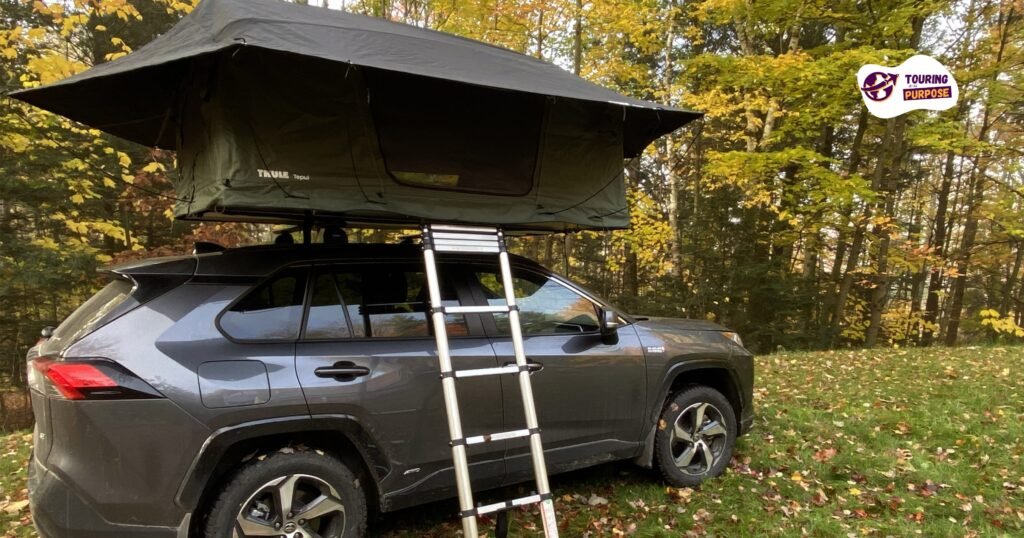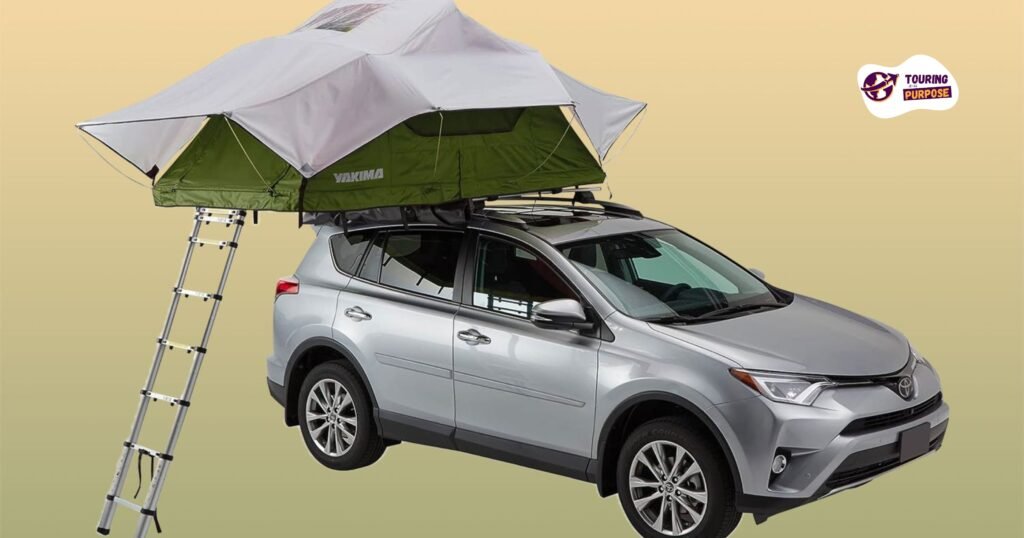Rooftop tents carry a hefty price tag due to a combination of factors. First and foremost, the materials used in their construction are often high-end. Why are rooftop tents so expensive and designed to withstand various weather conditions while offering comfort and durability?
The primary reason why rooftop tents are so expensive is the material. Rooftop tents come in two varieties: soft shell and hard shell. The design and manufacturing process of these tense complexes involves precise engineering to ensure they can safely attach to a range of vehicles.
Lastly, the specialized market for these tents is relatively small, meaning manufacturers cannot leverage economies of scale as effectively as they might with more mainstream products, contributing to higher per-unit costs.
1. Introduction to Rooftop Tents
Rooftop tents, an innovative camping solution, why are rooftop tents so expensive, and why are rooftop tents so expensive emerged as an answer to campers seeking both mobility and comfort. They are designed to be mounted on the roof of a vehicle, providing a safe, elevated sleeping area away from ground-based elements.
These tents deliver the unique combination of the adventure of camping and the convenience of a portable home. They offer an easy setup, comfortable accommodation, and a fantastic view.
However, acquiring one can be a significant investment, given their high costs, which can often be attributed to the quality of materials, meticulous design, manufacturing processes, and the niche market they cater to.
What Are Rooftop Tents?
- Introduce rooftop tents as a type of portable, elevated camping accommodation that mounts on the roofs of vehicles.
Growing Popularity
- Highlight the increasing demand for rooftop tents, driven by their convenience and elevated camping experience.

2. Materials and Build Quality
Rooftop tents are crafted from high-quality, weather-resistant materials to endure various climates. The tent’s structure, typically made of aluminum or steel, ensures stability and longevity.
Further, the tent fabric, often canvas or polyester, provides a waterproof yet breathable shelter. Attention to these material choices and build quality justifies the product’s significant investment, offering a durable, high-performance camping solution.
Quality Fabrics and Materials
- Explain that rooftop tents are constructed from high-quality and durable materials, including heavy-duty fabrics, aluminum or steel frames, and zippers designed to withstand outdoor elements.
Rigorous Testing and Quality Control
- Discuss the importance of rigorous testing and quality control in ensuring rooftop tents meet safety and performance standards.
3. Design and Engineering
The design and engineering of rooftop tents focus on ease of use, comfort, and durability. Meticulous attention is given to the tent’s aerodynamics. Why are rooftop tents so expensive, ensuring minimal impact on the vehicle’s fuel efficiency?
The weight distribution and mounting method are carefully engineered, ensuring the tent remains secure and stable, even in adverse conditions. Furthermore, the interior layout is designed to maximize space and comfort, often featuring a high-density foam mattress for a good night’s sleep.
Innovative Design
- Highlight the innovative and functional designs of rooftop tents, which provide easy setup, spacious interiors, and weather resistance.
Engineered for Durability
- Explain that rooftop tents are engineered to endure the stress of being mounted on vehicles and exposed to varying weather conditions.

4. Ease of Use and Convenience
Rooftop tents exemplify convenience, offering swift setup and breakdown processes. This ease of use extends to their storage, as they neatly pack away onto the vehicle’s roof, freeing up valuable interior space.
Their elevated position also provides an additional layer of security and a panoramic view of the surroundings, further enhancing the camping experience.
Quick Setup and Takedown
- Discuss the convenience of rooftop tents, which allow campers to set up and take down their shelter quickly and easily.
Camping Above Ground
- Explain the unique experience of camping above the ground, free from uneven terrain, critters, and moisture.
5. Aerodynamics and Vehicle Compatibility
Aerodynamic Profiles
- Address the need for rooftop tents to have streamlined, aerodynamic profiles to minimize wind resistance and fuel consumption.
Vehicle Compatibility
- Mention the diverse range of vehicles rooftop tents can be mounted on, which necessitates compatibility features and flexibility.
6. Manufacturing and Labor Costs
Skilled Labor
- Discuss the labor-intensive process of manufacturing rooftop tents, which often require skilled workers for sewing, welding, and assembly.
Quality Assurance
- Explain that maintaining high manufacturing standards and quality control adds to the overall cost.
7. Testing and Warranty
Product Testing
- Highlight the extensive testing rooftop tents undergo, including stress tests, water resistance trials, and UV exposure assessments.
Warranty Coverage
- Address the inclusion of warranties that protect buyers against defects and ensure customer satisfaction.
8. Market Demand and Competition
Rising Demand
- Discuss the increasing demand for rooftop tents, driven by the outdoor and adventure travel trends.
Competition Among Brands
- Explain that competition among rooftop tent brands can lead to higher pricing due to efforts to distinguish products based on quality and features.
9. Accessories and Add-Ons
Annex Rooms and Accessories
- Mention the availability of annex rooms, awnings, and other accessories that enhance the rooftop tent experience but can contribute to the overall cost.
10. Brand Reputation and Marketing
Established Brands
- Highlight the presence of established rooftop tent brands that have built reputations for quality, reliability, and innovation.
Marketing and Promotion
- Explain the costs associated with marketing and promotion, including advertisements and sponsorships in the outdoor industry.
11. Customization and Personalization
Custom Options
- Discuss the availability of customization options for rooftop tents, allowing buyers to tailor their tents to specific preferences.
Personalization Costs
- Mention that personalized features can add to the cost of the rooftop tent.
Conclusion
Rooftop tents offer an elevated camping experience that has garnered a dedicated following among outdoor enthusiasts. Their expensive price tags are a result of various factors. Why are rooftop tents so expensive, including the use of high-quality materials and build standards, innovative design and engineering, and convenience features such as quick setup and vehicle compatibility? Manufacturing and labor costs, extensive testing, warranty coverage, and competition in the market also contribute to the overall cost of rooftop tents. The reputation of established brands, marketing efforts, and the availability of customization options further impact pricing. Despite their high cost, rooftop tents provide a unique and comfortable way to experience the great outdoors, making them a valuable investment for those who prioritize convenience and adventure in their camping experiences.
FAQs
What is so great about rooftop tents?
Rooftop tents offer an enhanced camping experience, placing you off the ground and providing a comfortable and secure sleeping environment. They are known for their convenience, why are rooftop tents so expensive, quick setup, and compact design that doesn’t compromise comfort, making them an excellent choice for adventurers who value both practicality and a unique outdoor experience.
What are the cons of a rooftop tent?
Rooftop tents do have some disadvantages. They can add significant weight to your vehicle, potentially affecting fuel efficiency. The mounting process can also be complex and time-consuming. Furthermore, once installed, why are rooftop tents so expensive? It may limit the vehicle’s maneuverability in low-clearance areas. Lastly, their elevated price can be a deterrent for budget-conscious campers.
Why is a rooftop tent better than a ground tent?
A rooftop tent triumphs over a ground tent in several ways. Increased safety from ground-dwelling creatures, enhanced comfort with built-in mattresses, and the ability to set up camp virtually anywhere are just a few of the advantages. Moreover, these tents offer superior weather protection and durability, making them an attractive option for severe conditions and long-term use.
Do rooftop tents use more fuel?
Yes, rooftop tents do tend to increase fuel consumption. This is because they add significant weight to the vehicle and alter its aerodynamics, resulting in lower fuel efficiency. However, the exact impact varies based on factors like the weight of the tent, vehicle type, and driving speed. It’s advisable to consider these factors when planning your budget for journeys with a rooftop tent.































